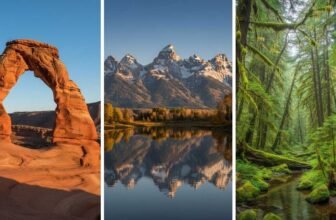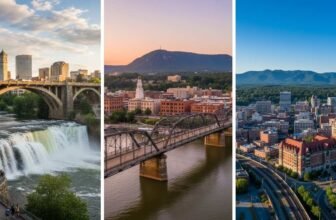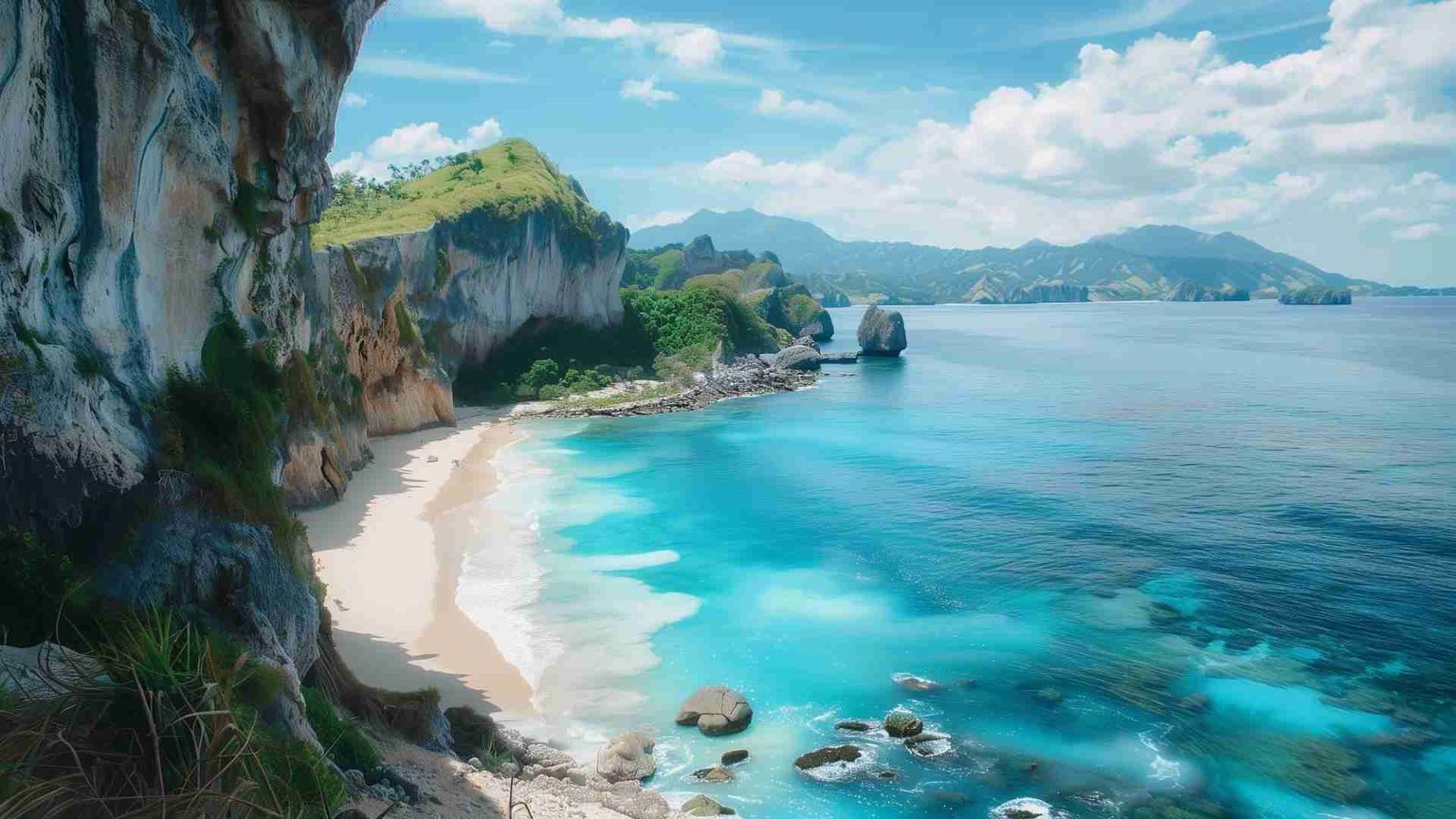

Salt on your lips, sun on your shoulders, and a horizon that belongs to you alone. Travelers crave that first-breath freedom—wonder without elbows, discovery without price shock, adventure without the queue. With costs climbing and beloved hotspots groaning under overtourism, looking beyond the usual map pins isn’t just thrifty; it’s how we travel better now.
Scattered across the globe are islands with lava-born drama, reef-bright water, night skies unscarred by neon, and cultures that welcome curiosity over crowds. Follow along to trade lines for lullabies, schedules for tides, and sameness for surprise—plus practical tips to make each escape beautifully yours.
1. Azores, Portugal
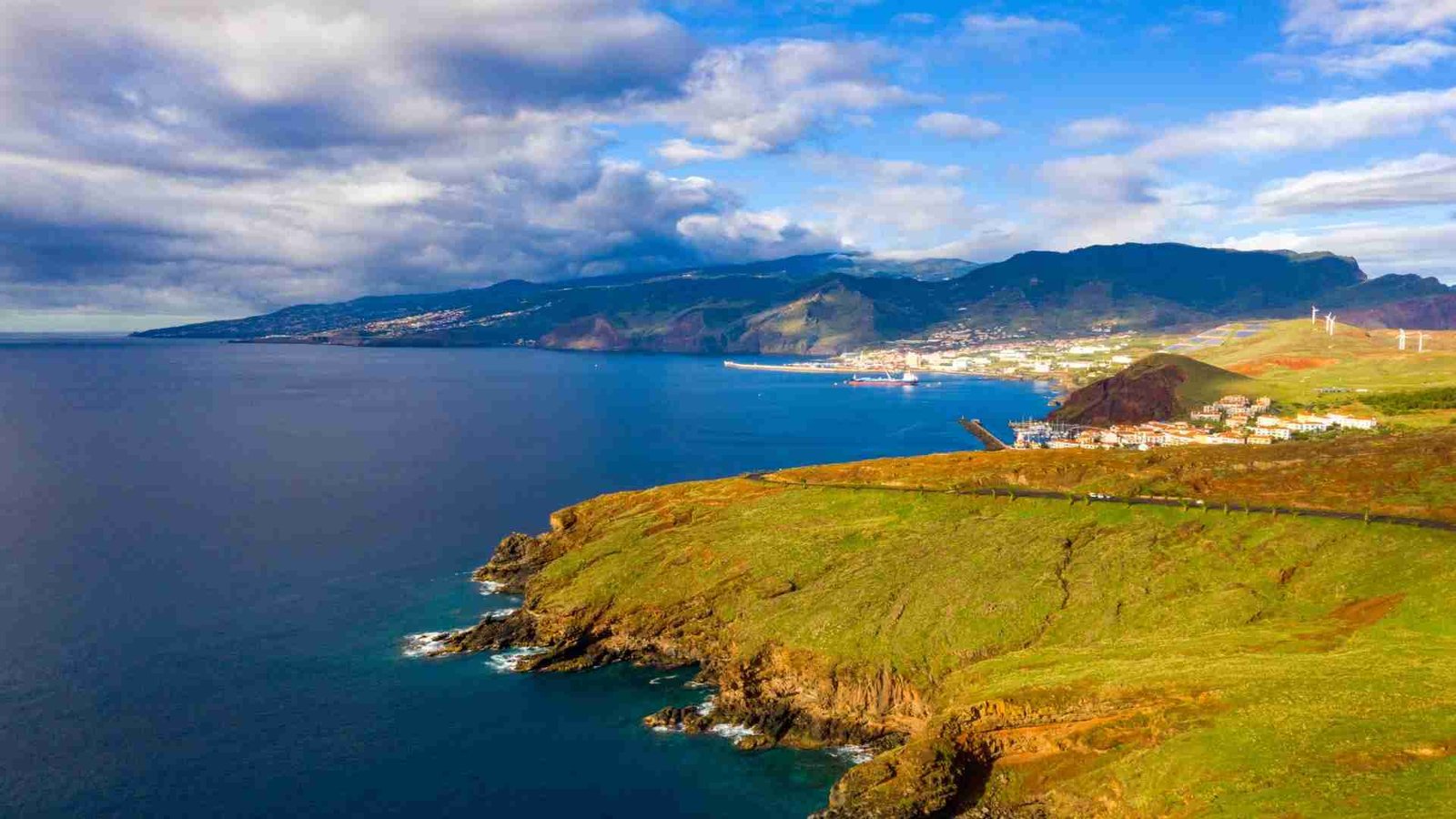
Floating in the heart of the Atlantic, the Azores feel like another planet—nine volcanic islands carpeted in emerald fields, crater lakes, and misty hydrangea-lined roads. Every turn seems to open into a new micro-climate: foggy peaks, sunlit coasts, and tiny villages where cows outnumber people. It’s the kind of place that humbles you with its raw, cinematic scale—where the air smells of salt and wildflowers, and life slows to an island heartbeat.
A personal moment that stays with many travelers is soaking in the geothermal pools of Furnas, surrounded by steam rising through the ferns, while rain lightly taps the surface. Locals will chat with you about the weather (a national obsession) or offer you homemade pineapple liqueur without hesitation. It feels intimate, authentic, and refreshingly unpolished.
Key Practical Info:
- Peak Season: June–September (mild 75°F / 24°C, lush and sunny). Off-peak: November–March (rainier, cheaper).
- Getting There: Direct flights from Lisbon; inter-island ferries and short flights connect São Miguel, Pico, and Faial.
- Ideal Stay: 5–7 days for 2–3 islands.
- Must-Try: Thermal baths at Terra Nostra, whale-watching in Pico, and Cozido stew cooked underground by volcanic heat.
- Budget: Mid-range ($80–150/night for boutique hotels).
- Etiquette: Islanders appreciate quiet respect; don’t rush conversations or meals.
- Photos: Sunrise at Lagoa do Fogo, mirror-still reflections at Sete Cidades, and hydrangea-lined country lanes.
2. Dominica, Caribbean
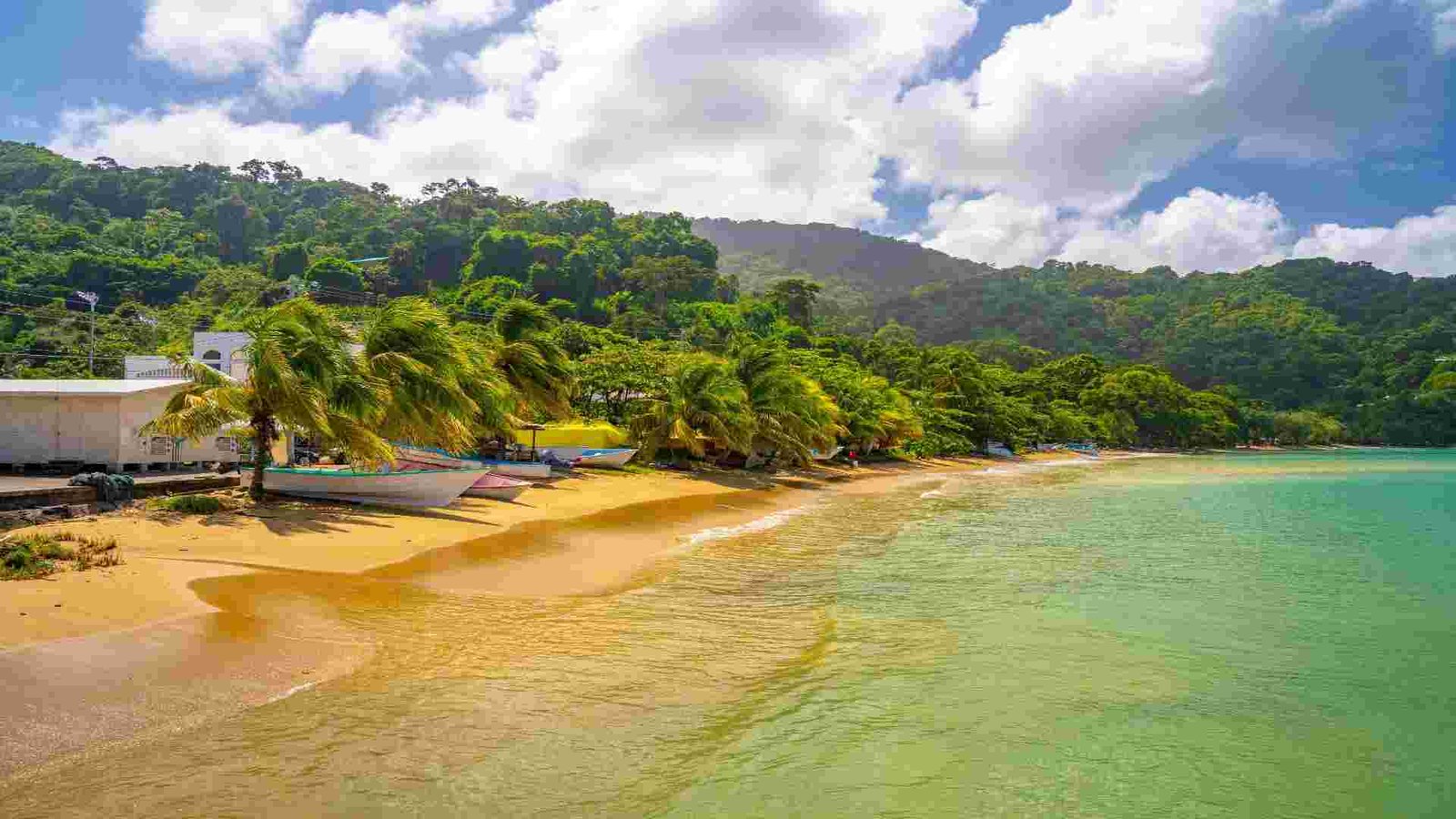
Dubbed the “Nature Island of the Caribbean,” Dominica is wild in the best way—mountains cloaked in rainforest, rivers that tumble into natural pools, and locals who greet strangers with easy laughter. It’s an island made for those who crave untamed landscapes over resorts, where hiking boots replace flip-flops and serenity replaces crowds.
There’s a moment on the Boiling Lake trail when the jungle opens into a sulfuric valley, steam hissing from the earth—it’s otherworldly, humbling, and entirely real. End the day floating in a hot spring while tree frogs chirp in the distance, and you’ll understand why this island feels like a spiritual reset.
Key Practical Info:
- Peak Season: December–April (dry, 77–85°F / 25–29°C). Off-peak: May–November (green season, occasional storms).
- Getting There: Fly into Douglas-Charles Airport via San Juan, Barbados, or Antigua.
- Ideal Stay: 6–8 days.
- Must-Try: Trafalgar Falls, Titou Gorge swim, and local Creole cuisine like mountain chicken (frog legs) and plantain fritters.
- Budget: Moderate to affordable ($60–120/night).
- Etiquette: Greet with a smile; locals value friendliness and eye contact.
- Photos: Waterfall canyons, sulfur vents, and lush jungle paths under filtered sunlight.
3. Lombok, Indonesia
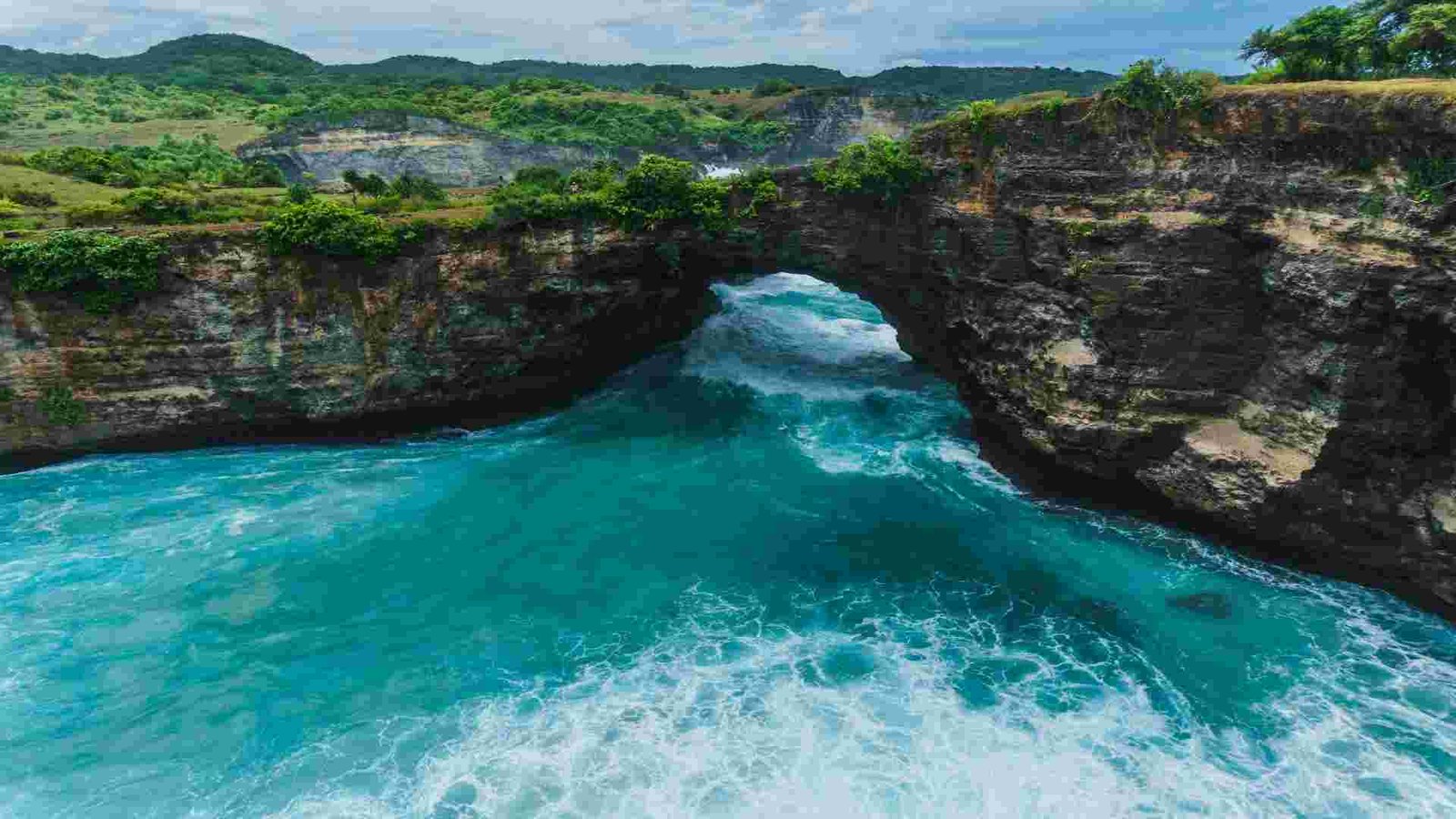
Just east of Bali, Lombok offers that tropical magic—without the traffic or tourist overload. Picture turquoise bays, white-sand crescents fringed by palms, and the mighty Mount Rinjani watching over it all. Its charm lies in balance: modern beach cafés coexist with Sasak villages where life still moves to the rhythm of weaving looms and call to prayer.
One memory that defines Lombok is standing on Selong Belanak Beach at dusk, surfers silhouetted against apricot skies, while local kids kick soccer balls barefoot in the tide. There’s a purity here—unpretentious, easy, and utterly captivating.
Key Practical Info:
- Peak Season: May–October (dry, sunny). Off-peak: November–April (lush, humid, fewer tourists).
- Getting There: Flights from Bali (25 minutes) or Jakarta; boats from Gili Islands.
- Ideal Stay: 5–7 days.
- Must-Try: Trek Mount Rinjani, snorkel Gili Nanggu, and savor spicy ayam taliwang chicken.
- Budget: Backpacker-friendly to mid-range ($30–100/night).
- Etiquette: Dress modestly in villages; remove shoes when entering homes.
- Photos: Sunset over Rinjani, fishermen pulling nets, palm-lined roads glowing gold.
4. Siargao, Philippines

Once a hidden surf paradise, Siargao now radiates the same easy, wave-washed soul that made Hawaii famous decades ago. Coconut palms stretch to the horizon, lagoons gleam like glass, and locals call everyone “friend.” It’s the perfect mix of laid-back surf energy and Filipino warmth.
You’ll never forget paddling across Sugba Lagoon—emerald water beneath you, limestone cliffs above, silence all around except the soft splash of your oar. Evenings unfold with acoustic music and fresh seafood under string lights by the sea. Siargao’s magic is that it feels like a community, not a resort.
Key Practical Info:
- Peak Season: March–October (dry, calm seas). Off-peak: November–February (occasional rain, fewer crowds).
- Getting There: Fly to Sayak Airport via Manila or Cebu.
- Ideal Stay: 4–6 days.
- Must-Try: Surf Cloud 9, visit Sohoton Cove, and join a local boodle fight (shared banana-leaf feast).
- Budget: Affordable ($40–90/night).
- Etiquette: Smile often; Filipinos value warmth and humor.
- Photos: Aerial shots of Coconut Road, Sugba Lagoon reflections, and sunrise surf silhouettes.
5. Sri Lanka

Sri Lanka is a mini-continent in island form—ancient temples, tea-blanketed hills, golden coasts, and elephants wandering through misty forests. You can surf at sunrise, explore centuries-old ruins by midday, and sip Ceylon tea above the clouds by afternoon. Few destinations offer this blend of diversity and accessibility.
A traveler’s heart often anchors in Ella, where trains snake through tea gardens and waterfalls tumble beside rust-red bridges. Conversations with smiling tea-pickers or a spontaneous meal of rice and curry shared by locals reveal the heart of this island: warmth, resilience, and joy.
Key Practical Info:
- Peak Season: December–April (south and west coasts); May–September (east).
- Getting There: Fly into Colombo; scenic train journeys connect major spots.
- Ideal Stay: 10–14 days.
- Must-Try: Climb Sigiriya Rock, visit tea estates, and safari in Yala.
- Budget: Ranges widely ($30–150/day).
- Etiquette: Dress modestly near temples; remove shoes and cover shoulders.
- Photos: Nine Arches Bridge, Mirissa Beach sunsets, and stilt fishermen against turquoise seas.
6. Zanzibar, Tanzania — Where Spice Meets Sea Breeze

Zanzibar’s magic isn’t just in its beaches—it’s in the air itself, heavy with clove, cinnamon, and sea salt. While most visitors race to Nungwi or Kendwa, the true essence hides in the labyrinthine alleys of Stone Town, where centuries of Arab, Indian, and Swahili influence mingle under the scent of grilled octopus. Picture dawn calls to prayer echoing between coral stone walls while vendors arrange spice baskets like paint palettes.
What makes Zanzibar special isn’t escapism—it’s immersion. You might find yourself sipping spiced coffee on a wooden dhow, the horizon shifting from copper to indigo, as fishermen sing in rhythm with their oars. This is an island that doesn’t perform for tourists; it simply continues its rhythm, timeless and fragrant.
Practical Angle:
Stay curious: opt for a spice farm homestay rather than a resort to learn clove cultivation firsthand. Travel is smooth via flights from Dar es Salaam (20 min). Budget: mid to high range ($70–180/night). Best months: June–October for cool breezes. Respect local modesty—cover shoulders in town. Best shots? Stone Town doors, dhow silhouettes, and market spice arrays glowing at sunset.
7. La Palma, Canary Islands (Spain) — Europe’s Hidden Hawaii
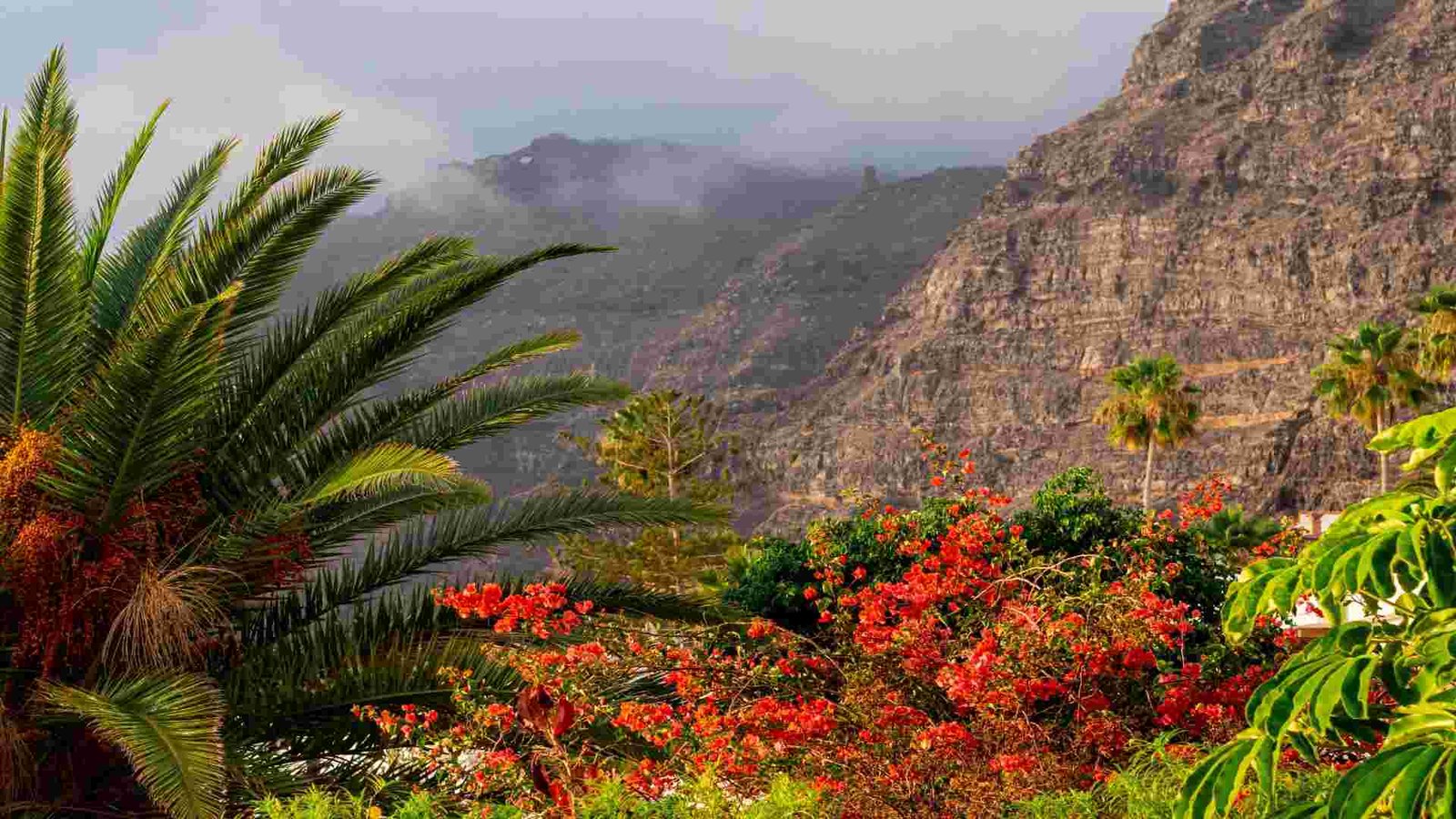
While Tenerife and Gran Canaria grab the spotlight, La Palma quietly thrives as a UNESCO Biosphere Reserve. Here, volcanoes meet pine forests, and lava paths end in black-sand coves where you can swim alone for hours. It’s a place where the night sky still belongs to the stars—so much so that it’s known as “La Isla Bonita” for its celestial clarity.
Picture hiking the Caldera de Taburiente, clouds curling below you, and the occasional whiff of sulfur reminding you the earth is alive beneath your feet. Then, as evening falls, locals gather at family-run bodegas for gofio (toasted grain) and grilled cheese with mojo sauce.
Practical Snapshot:
- Getting there: Flights from Madrid or Tenerife North.
- Stay: Mountain lodges and eco-fincas ($90–160/night).
- Best time: March–June for hiking, September for clear skies.
- Why visit: Dark-sky stargazing, volcanic hikes, quiet authenticity.
- Local etiquette: Greetings are warm; a firm handshake means respect.
- Hidden gem: The natural pools of Charco Azul—a sunrise swim in total stillness.
8. Flores & Komodo, Indonesia — Dragons, Coral, and the Edges of Imagination

If Bali feels too polished, Flores and Komodo remain thrillingly primal. Think of an island chain where pink beaches blush at sunset, manta rays drift below your boat, and prehistoric dragons still roam dry savannas. This isn’t luxury—it’s discovery, raw and unforgettable.
A perfect day unfolds like a film: sailing past karst islands at dawn, hiking to Padar Island’s panoramic ridge, then snorkeling amid coral gardens so vivid they border on surreal. By evening, the scent of grilled fish mixes with ocean spray as local crews share stories beneath a galaxy of stars.
Quick Reference (Traveler’s Grid):
- How to Go: Fly to Labuan Bajo from Bali. Charter boats or liveaboards to explore islands.
- Stay Duration: 4–5 days for island-hopping.
- Weather Window: April–October (calm seas).
- Spend Level: Moderate ($100–200/day including tours).
- Experience Picks: Komodo dragons, manta snorkels, and Padar viewpoints.
- Cultural Cue: Respect nature—locals consider dragons sacred.
- Photo Edge: Drone over Padar’s tri-colored bays at golden hour.
9. Cape Verde (Cabo Verde) — Africa’s Island Symphony
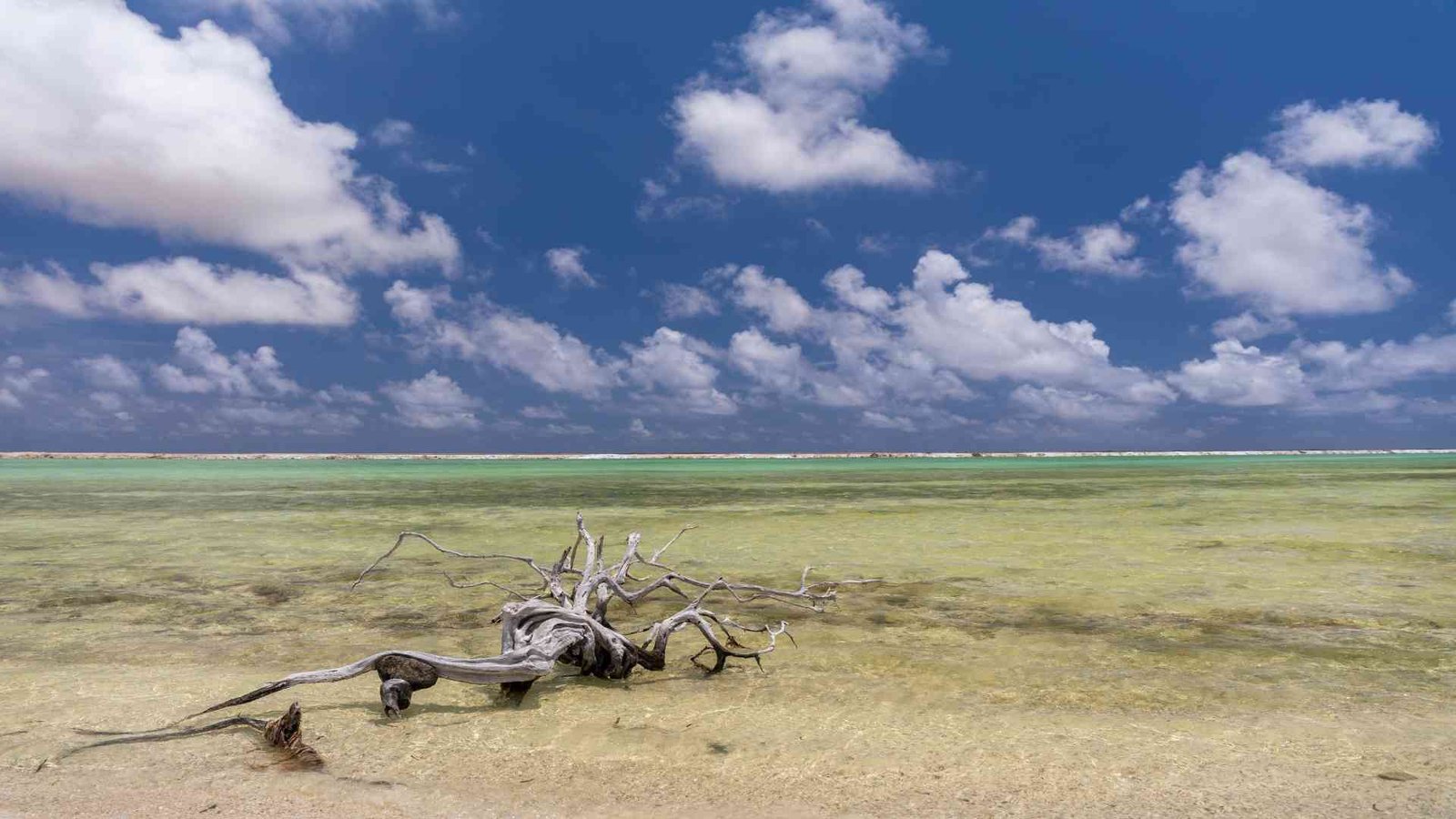
Cape Verde feels like an entire continent distilled into islands: part Africa, part Portugal, entirely itself. The rhythm here is not driven by tourism but by morna, the national music that seeps into your bones. In Mindelo, locals dance barefoot on cobblestone streets; on Sal, the wind shapes dunes into sculptures of light.
There’s something striking about Cape Verde’s resilience—a landscape carved by volcanoes, softened by song. Spend a night in São Vicente’s seaside cafés, and you’ll hear stories sung rather than spoken. The people don’t sell paradise; they live it in small, genuine gestures—sharing grogue rum, offering directions, or just sitting by the sea doing nothing at all.
Traveler’s Insights:
- Flights: From Lisbon or Dakar.
- Best Season: November–June for dry weather and music festivals.
- Budget: Moderate ($60–130/day).
- Length: 7–9 days to explore multiple islands.
- Signature Moments: Live morna concerts, Sal’s turquoise bays, Fogo’s volcanic vineyards.
- Cultural Reminder: Time moves slowly here—embrace “No stress,” the national motto.
- Photo Moments: Music-filled plazas, black lava vineyards, pastel ports against turquoise seas.
10. Phu Quoc, Vietnam — Southeast Asia’s Quiet Emerald
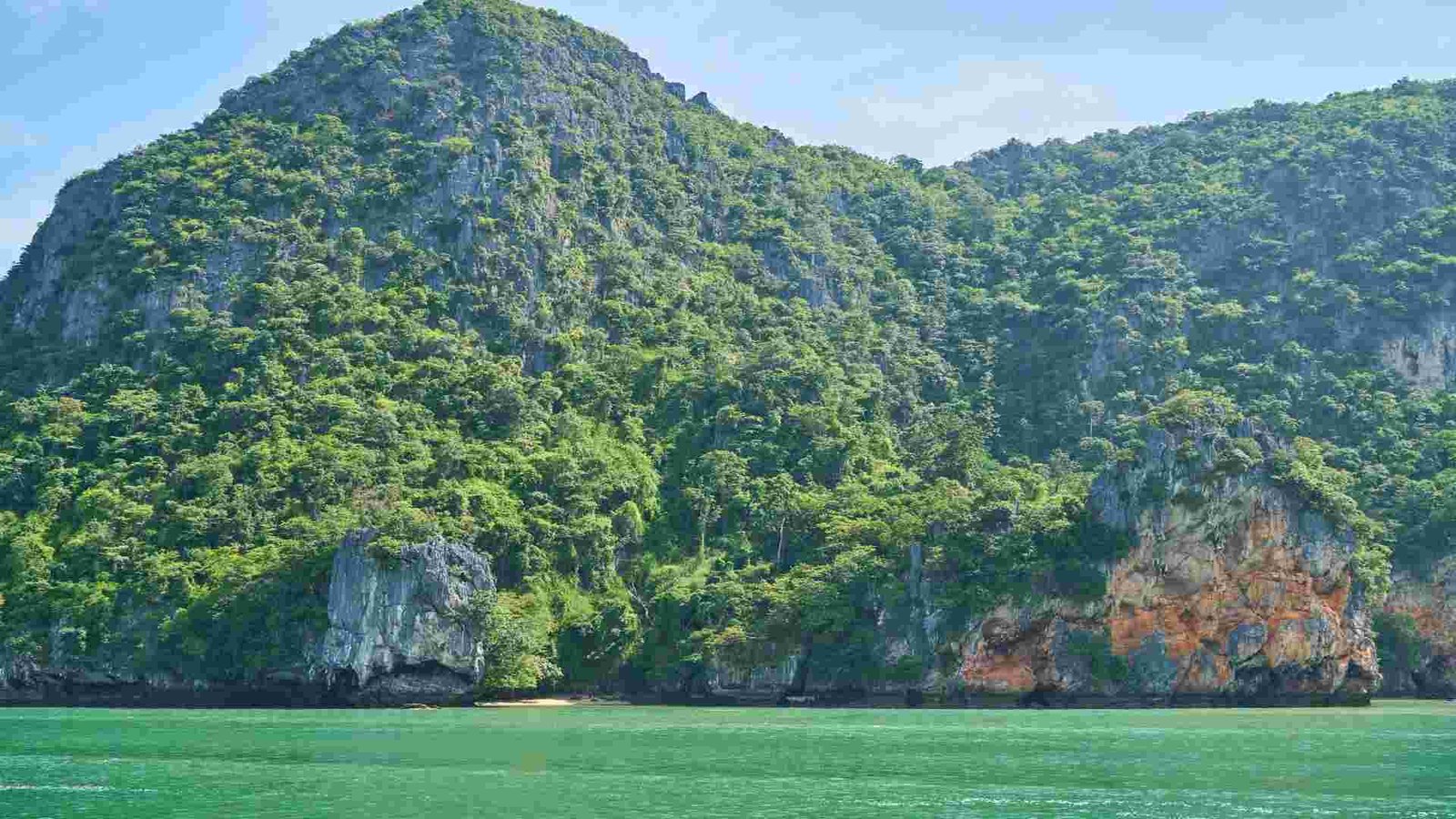
Phu Quoc has long been whispered about as “Vietnam’s Bali,” but that comparison misses the truth—it’s gentler, greener, and grounded in small wonders. Here, fishermen still mend nets by hand, dogs nap in the shade of palm huts, and water glows turquoise over coral shallows. The island’s charm lies in its simplicity: it doesn’t shout beauty, it hums it softly.
The best memories are unscripted—finding a hidden beach after a wrong turn, chatting with a local pepper farmer over tea, or watching the sunset from a floating seafood shack as lanterns flicker on the water. Phu Quoc isn’t about ticking off sights; it’s about soaking into a rhythm where every hour feels earned.
Essentials at a Glance:
- How to Arrive: Direct flights from Ho Chi Minh City or Bangkok.
- Best Months: December–April (sunny, calm seas).
- Stay: Beach bungalows or small eco-resorts ($50–120/night).
- What to Do: Visit Phu Quoc National Park, snorkel at Fingernail Island, and try fish sauce straight from the source.
- Budget Tips: Street food dinners under $5, scooters for $7/day.
- Etiquette: Smile, accept tea—it’s a sign of respect.
- Photo Gold: Pepper plantations, sunset piers, and long-tail boats floating in glassy shallows.
11. Koh Lanta, Thailand — The Slow-Island Blueprint
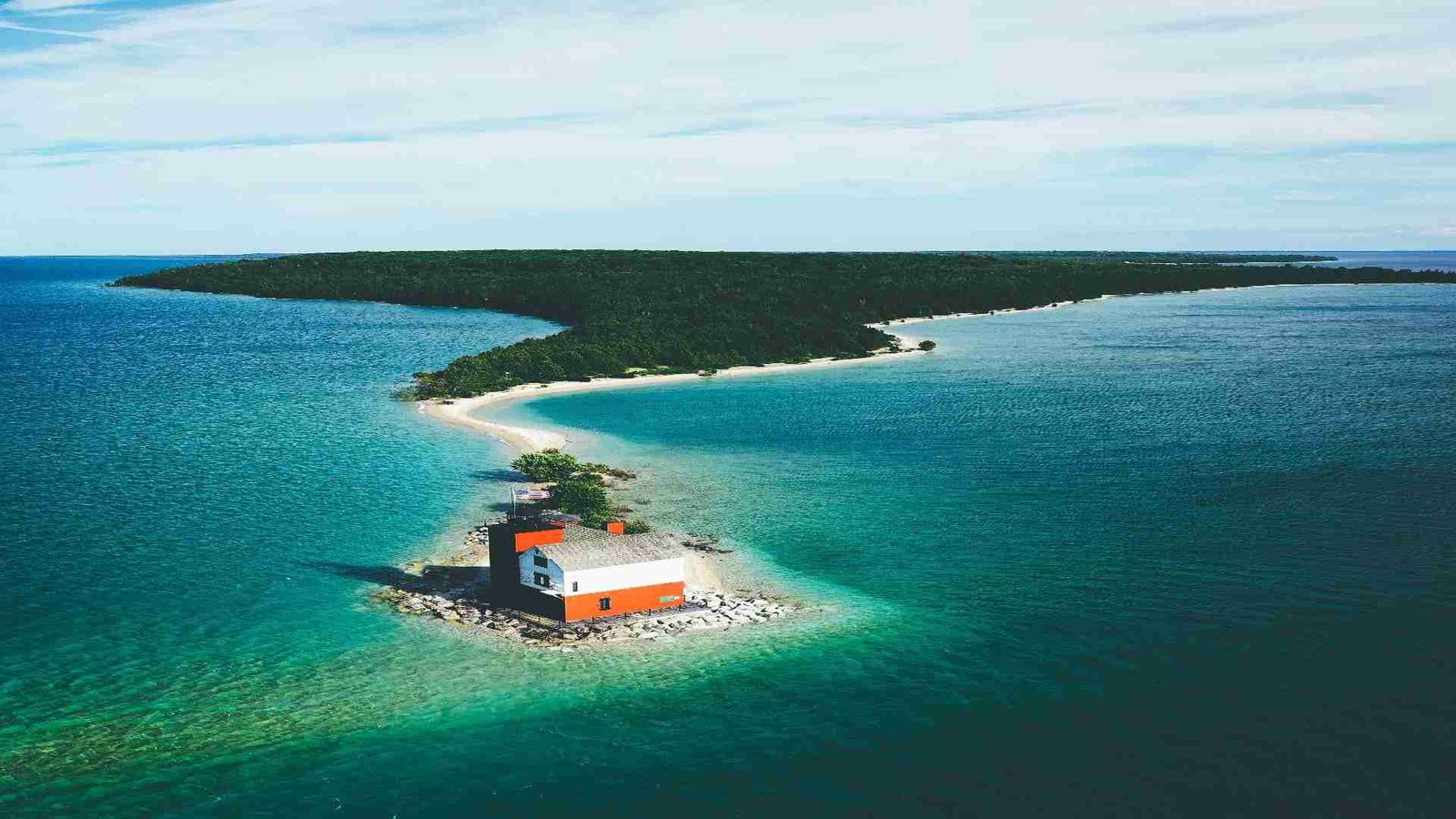
You come to Koh Lanta for the beaches; you stay for the rhythm. Mornings begin with long, unhurried walks on Long Beach when the tide draws lacework across the sand. Midday drifting turns into golden-hour scooter rides down the island’s single spine, the road whispering past rubber trees and stilt cafés that seem to levitate over sea and mangrove.
The hidden gem isn’t a beach—it’s Lanta Old Town at dusk. Lanterns blink awake, fishermen mend lines, and a coconut-ice-cream cart rattles by like a childhood memory. If you measure a place by how quickly strangers feel like neighbors, Lanta ranks high.
Pocket Practical (as a packing list):
- When to come: Dry season (Nov–Apr) = calm seas; Green season (May–Oct) = lush + fewer people.
- Getting around: Scooter + offline map, easy coastal navigation.
- Base camp: Klong Khong for boho cafés; Klong Nin for sunset.
- Don’t miss: Koh Rok snorkel, Mu Ko Lanta National Park lighthouse.
- Budget pulse: Beach bungalows $35–90; street food feasts <$5.
- Respect: Cover up in villages; shoes off in shops/homes.
- Photo cue: Tide pools reflecting magenta sunsets—shoot at low tide.
12. Langkawi, Malaysia — Geopark Dreams & Sky-High Silence
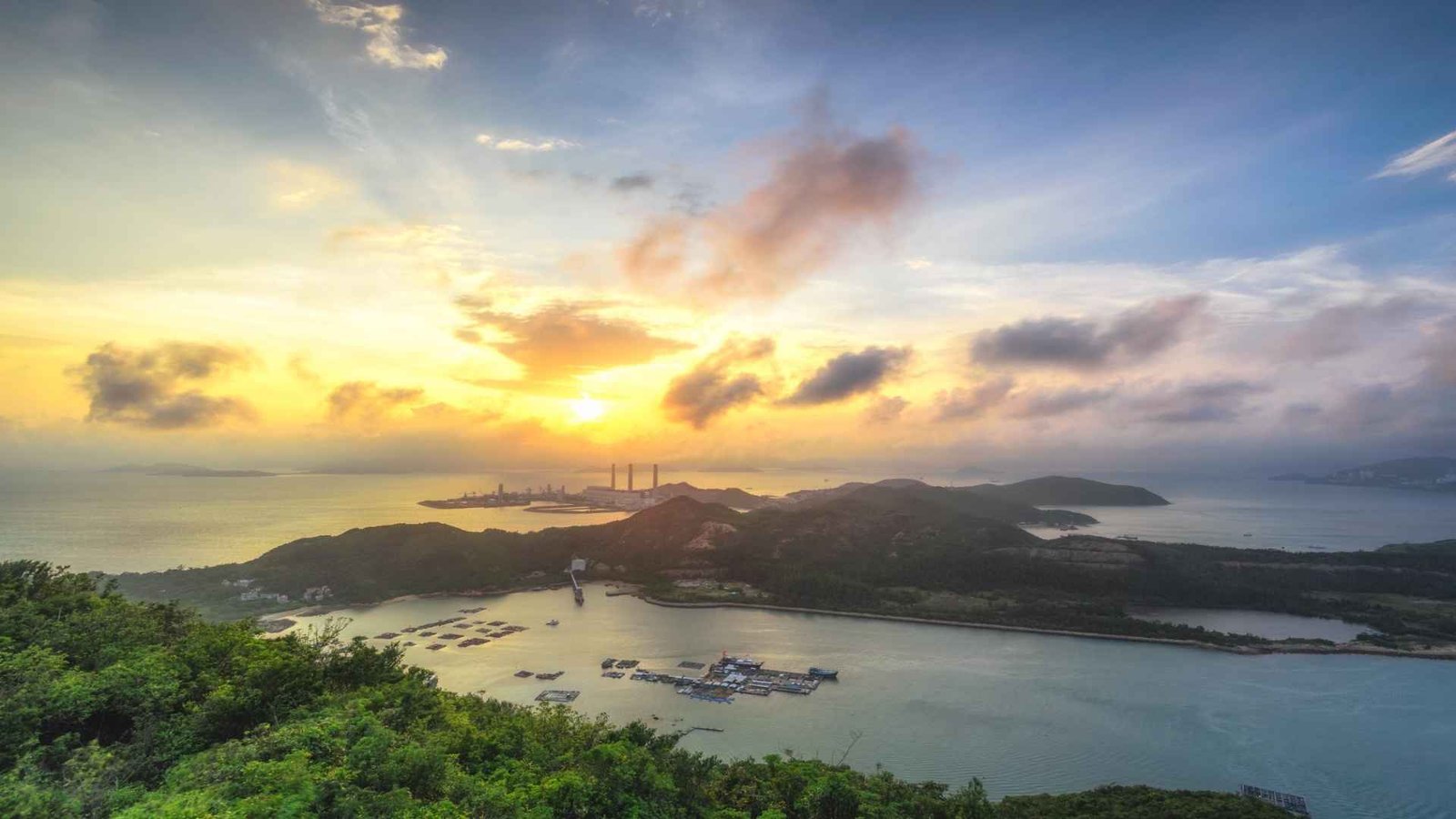
Langkawi’s conversations happen between limestone karsts and rainforest canopies. The cable car glides into cloud and suddenly the island below is a topo map in green and silver. But the surprise is on the ground: Kilim Karst Geoforest Park, where eagles spiral over jade channels and mangroves breathe in slow, tidal sentences.
Insider move: drift into a nighttime mangrove kayak—phosphorescence flickers off your paddle like sparks from an invisible fire. It’s the kind of quiet that resets your internal clock.
Trip Sketch (like a postcard):
Weather sweet spot: Dec–Mar breezy and bright; Apr–Aug warmer, scattered showers.
Arrive & roam: Fly to LGK; rent a car—island roads are forgiving.
Stay style: Boutique near Pantai Tengah = beach + hush.
Quirky musts: Mahsuri Mausoleum folklore, black-sand bay, local laksa stalls.
Costs: Mid-range; duty-free perks keep treats affordable.
Etiquette note: Modest attire beyond beaches; a light “terima kasih” goes far.
Frame the shot: SkyBridge at golden hour; mangrove textures on macro.
13. Tobago, Trinidad & Tobago — Reef, Rhythm, and Rainforest
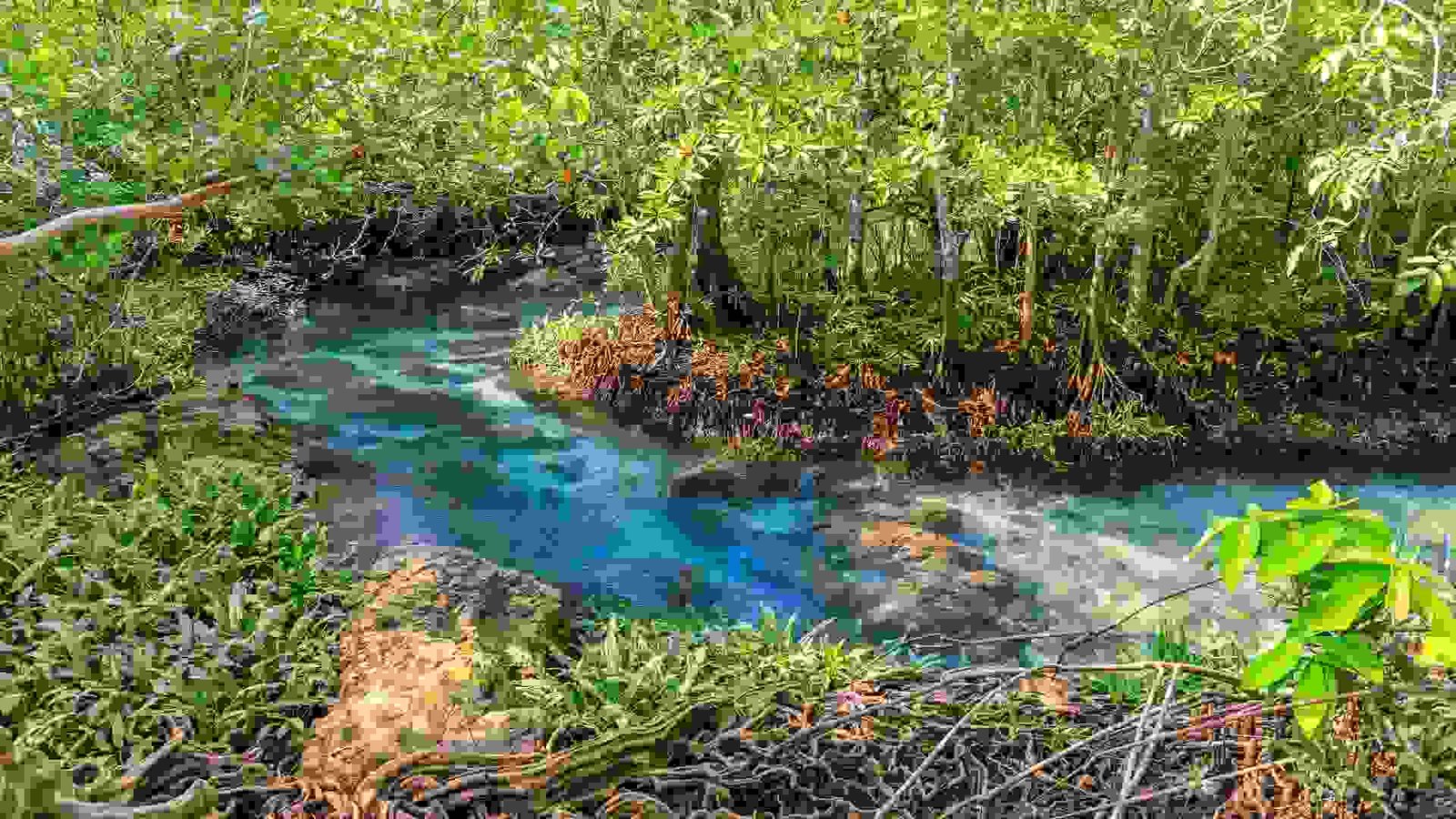
Tobago is what happens when an island puts ecosystems ahead of ego. The Nylon Pool is a waist-deep miracle of turquoise, and the Main Ridge Forest Reserve (oldest protected rainforest in the Western Hemisphere) hums with blue-backed manakins and waterfall whispers. Tourists skim the surface; travelers linger and listen.
Hidden gem: Castara village on a Sunday night—steelpan rehearsals drift through breadfruit smoke, and someone’s aunt insists you try bake and shark. Moments stitch themselves together until you realize you’ve been welcomed, not processed.
Field Notes (as a naturalist log):
- Seasonality: Jan–May drier seas; Jun–Dec greener, good birding.
- Access: Fly via Port of Spain or direct seasonal flights.
- Movement: Route taxis + community boats to reefs.
- Do-list: Buccoo Reef drift, Argyle Falls, village fish fry.
- Spend: Guesthouses $60–120; reef trips $25–40.
- Culture cue: Ask before photos; greet with “Good morning/afternoon.”
- Photo brief: Reef from boat glass, forest canopy rays, market color stories.
14. Bocas del Toro, Panama — Archipelago of Happy Detours
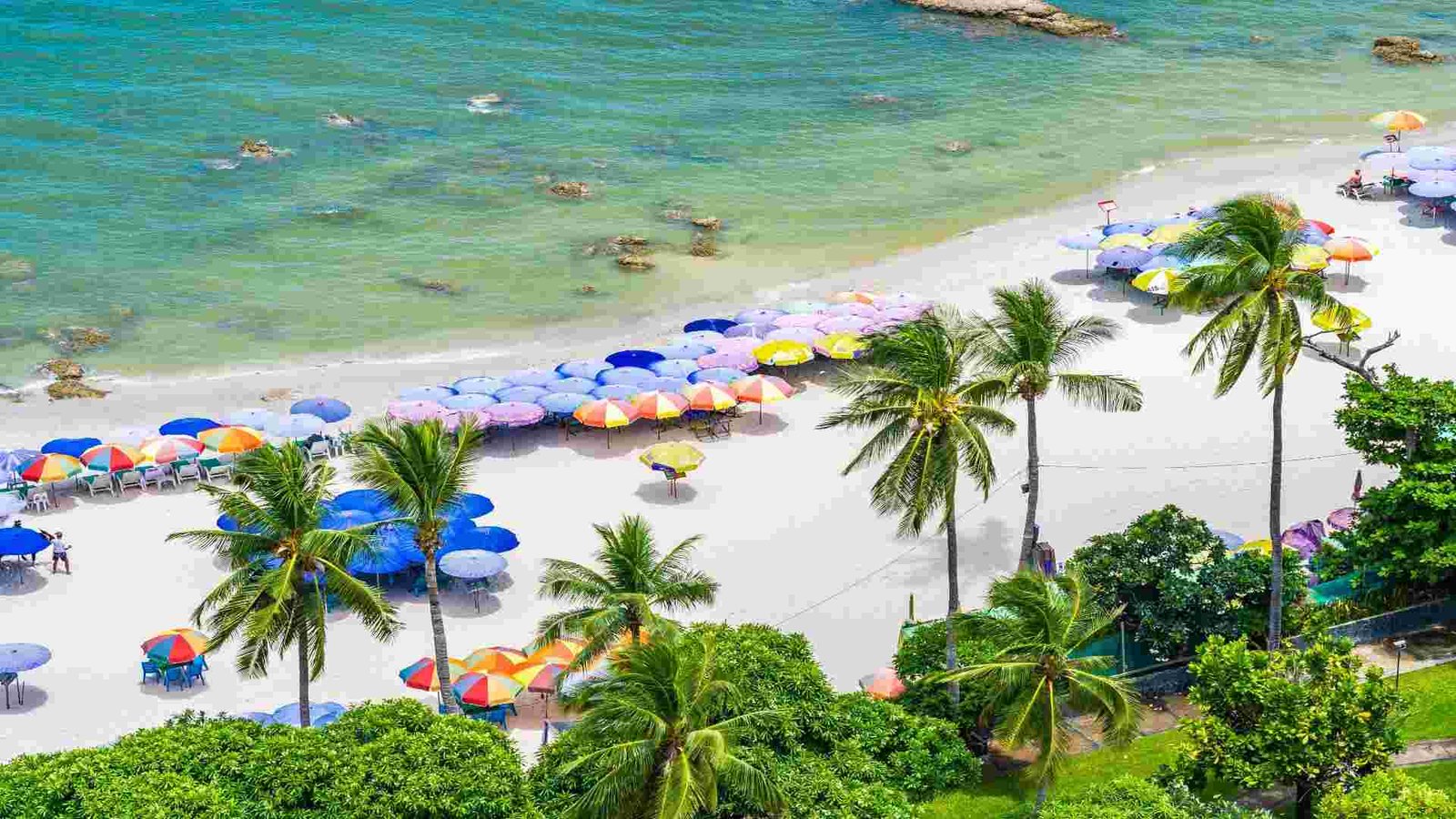
Bocas is an idea in motion—boats as buses, islands as neighborhoods, and days that slide from cacao farm tours to bioluminescent swims. The lesser-known treasure? Isla Bastimentos’ Old Bank, a Creole-English village where verandas creak with stories and cacao brownies arrive still warm.
Plan a seahorse-spotting drift along mangroves with a local guide; they know eddies where tiny tails curl around roots like punctuation. Night brings plankton that glitter with every kick—swimming stars.
Itinerary Remix (choose-your-own-current):
- Windows: Jan–Apr and Sep–Oct often calm; summer = surf.
- Hop: Fly to BOC via Panama City; water taxis everywhere.
- Stay pods: Bocas Town for buzz, Carenero for quick escapes, Bastimentos for wild hush.
- Essentials: Red Frog Beach, cacao co-ops, Dolphin Bay (go early, small boats).
- Wallet check: Mid-range; boat days add up—share rides.
- Manners: Reef-safe sunscreen; no touching starfish.
- Lens list: Overwater bungalows, mangrove tunnels, neon night swims (high ISO).
15. Roatán, Honduras — Barrier Reef, Small-Town Heart

Roatán sits beside the Mesoamerican Barrier Reef like a front-row seat to color itself. Divers know the headliners (Mary’s Place, West End Wall), but the side stage steals the show: Sandy Bay’s community-run sanctuaries, Friday barbecues where lionfish becomes tacos, and fishermen swap weather math like poetry.
Insider secret: East End by skiff. The farther you go, the quieter it gets—mangrove cuts, skinny-water flats, and a lone hammock you’ll swear appeared just for you. The reef here feels personal, a conversation not a spectacle.
Dive Card (practical as a logbook):
- Best window: Feb–Jun clearest; Sep–Nov calm + warm.
- Touchdown: Flights via San Pedro Sula or Miami/Atlanta/Houston.
- Base: West End for dive shops; Camp Bay for castaway feels.
- Top moves: Two-tank morning dives, lionfish ceviche, Garífuna music in Punta Gorda.
- Costs: Budget to mid; multi-dive packages save big.
- Etiquette: Tip boat crews; no glove diving to deter reef touching.
- Shot list: Split-level reef images, piers at blue hour, Garífuna drum circles.
Conclusion:
Trade the crowds for coastlines that still breathe, where tides set the schedule and conversations last longer than queues. Choosing these lesser-known islands means richer culture, clearer water, and kinder prices—without sacrificing wonder. Travel light, spend local, and tread gently so these places stay unspoiled. Your best “Hawaii” might be the one you haven’t heard of yet—and we’ve shown you how to find it.



